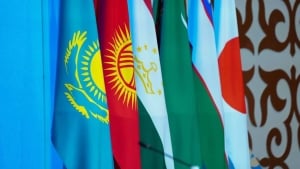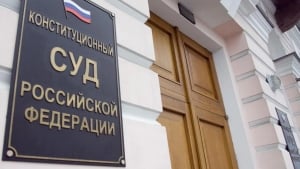
Two days have passed since the meeting in Alaska, but no official statement has been made yet. This was reported by Zamin.uz.
The media seems to have outlined the main directions. According to sources, the agreement proposed by Moscow includes clauses such as handing over the Donbass region, recognizing Crimea as Russian territory, and lifting some sanctions.
In return, Russia is said to be ready to return the territories occupied in the Sumy and Kharkiv regions. Vladimir Putin's main demand is the complete withdrawal of Ukrainian troops from Donbass.
According to Bloomberg sources, after his conversation with Putin, Donald Trump called Ukrainian President Zelensky and European leaders, mentioning this very demand. The Financial Times emphasized that giving up Donbass is one of the Kremlin's central conditions in the negotiations.
If this condition is met, it is said that the rest of the front line could be frozen, which increases the likelihood that some parts of the partially occupied Kherson and Zaporizhzhia regions will remain under Russian control. Additionally, Moscow demands removing political issues such as NATO's eastward expansion from the agenda.
This topic constitutes an important part of the political tragedy in the negotiations. There is also no clear decision regarding Crimea: Putin demands lifting some sanctions and official recognition of Crimea as Russian territory.
However, it remains open whether this recognition should be made only by the United States or by the entire West and Kyiv as well. As a result of the meetings, the overall situation is such that Russia demands the withdrawal of Ukrainian troops from the Donetsk and Luhansk regions, and in return is ready to freeze the Zaporizhzhia and Kherson fronts in their current state.
It has also been stated that Russia is ready to return the territories occupied by Russian troops in northern Sumy and northeastern Kharkiv. According to DeepState project calculations, Russia controls about 440 square kilometers in Sumy and Kharkiv, while Ukraine has retained nearly 6,600 square kilometers in Donbass.
Moscow also demands official status for the Russian language and conditions that allow the Russian Orthodox Church to operate without obstruction. These issues bring the humanitarian and legal block to the center of the negotiations.
According to Donald Trump, the current situation depends on President Zelensky's decision. In conversations with Zelensky and European leaders, he emphasized that Kyiv should independently decide about its territories.
According to a Reuters source, Zelensky rejected the proposal to give up Donbass in exchange for freezing the front. The president had previously made a firm statement about not giving his lands to the invaders.
The change in Trump's words — not a temporary truce but a peace agreement is needed — was evaluated as favorable for the Kremlin. This approach expands the possibility of continuing negotiations even if the fighting does not stop.
In Europe, there is a different point of view. Italian Prime Minister Giorgia Meloni proposed the idea of providing security guarantees to Ukraine.
This is inspired by Article 5 of the NATO treaty but is a mechanism outside NATO, and the format proposed by the US is considered to be roughly agreed upon with Moscow. A meeting of Zelensky, Trump, and European Union representatives is planned in Washington in the coming days.
Official statements following this meeting will be of great importance. The situation on the front is constantly changing.
Zelensky announced that enemy pressure and strikes may intensify in the coming days. He noted that Ukrainian troops are advancing on the Donetsk direction, particularly along the Dobropillia and Pokrovsk lines.
In mid-August, reports emerged that the Russian army had broken through the defensive line northeast of Pokrovsk. In conclusion, the current basis







